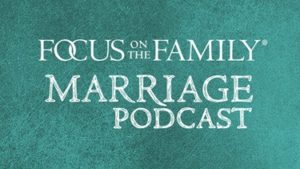As you probably know, this is a far more complicated issue than it used to be. There are more options and more potential sources of retirement income available than ever before. But a retiree has to be wise, savvy and informed in order to take maximum advantage of the situation. In most cases, it takes a combination of several different plans or accounts to meet any given individual’s complete financial needs. That’s why it’s important to take the initiative to educate yourself about your choices. Let’s take a look at some of the best known and most widely used alternatives: social security, employer-funded pensions, and retirement accounts.
Social Security
Since its establishment in 1935, Social Security has been the primary source of income for many U.S. senior citizens. Almost 60 percent of beneficiaries derive more than half their income from Social Security; for 30 percent, these payments make up 90 percent of their income. In 2000, about 10 percent of America’s elderly lived in poverty; without Social Security that figure would have been about 48 percent.
Virtually all American workers qualify for some Social Security benefits. Workers who earn at least $1,160.00 per quarter (2013 rates) can earn up to four credits each year. If a person earns at least 40 credits during his or her lifetime, he or she is eligible to receive Social Security benefits. Total benefits are based on the total number of credits and earnings during a person’s work history. To help workers anticipate their eventual earnings, the Social Security Administration sends “Your Social Security Statement” letters each year that show each worker’s earnings record and estimated benefits. You should always review this annual statement closely for any errors.
For the past several decades, economists and demographers have warned about the Social Security program’s insolvency. The first baby boomers turned 62 in 2008, which is expected to trigger an unprecedented number of benefit applications. Naturally, U.S. policy makers will continue to debate the best way to preserve Social Security’s viability – whether by delaying retirement age, decreasing benefits, and/or increasing taxes. But even if Social Security remains solvent, it is unwise to depend too heavily on Social Security benefits. They aren’t intended to be the sole source of income when you retire.
Employer-funded pensions
The days of walking to the mailbox to pick up the monthly pension check are numbered. Most large, well-established companies once offered defined benefit pension plans. During the last 15 to 20 years, however, as the expense and risk factors associated with these funds have increased, some companies have moved away from them. Companies now structure more of their retirement plans as defined contribution plans, such as 401 (k)s. These plans are still built using defined contributions; however, the employee assumes the investment risk and the future benefit is unknown.
Many people still have a pension benefit from one or more former employers. They must decide when and how to collect their benefits. Because the benefit amounts vary for each person depending on their company’s program, their age, spouse’s age, salary, and years of service, no one-size-fits-all calculations are possible. In most cases, you are generally better served by choosing pension options that pay a lifetime benefit for both you and at least 50 percent for your surviving spouse.
Retirement accounts – 401(k)s and IRAs
While the number of retirees who must decide how to structure their pension payouts is shrinking, more and more people must determine how to withdraw funds from their retirement accounts at a sustainable rate. For them, interest and dividend income – sometimes even the gradual use of “investment principle” – is a key source of income in their later years.
Accumulating assets in Individual Retirement Accounts (IRAs), company 401(k) accounts, or brokerage accounts is a wise move. As a matter of fact, in a world where the future viability of Social Security hangs in the balance and large companies are scaling back on retirement benefits, personal supplements of this kind are becoming an absolute necessity.
But while Americans are regularly encouraged to save using IRAs and 401(k)s, little is said about the withdrawal phase. Psychologically, this can be a difficult transition for some people, since moving from the accumulation to the distribution phase involves an admission of getting older.
What’s more, when the balances in these accounts begin falling instead of rising, you may find yourself struggling with feelings of insecurity. So be forewarned of these common emotional reactions. Meanwhile, educate yourself about the tax rules and limits on tax-deferred savings. And don’t be afraid to use these funds for the purpose for which they were intended.
For additional help and information on this topic, we’d encourage you to consult the resources and referrals highlighted below. Or if you have relationship concerns and challenges associated with this situation, please don’t hesitate to give our Counseling department a call.
Resources
If a title is currently unavailable through Focus on the Family, we encourage you to use another retailer.
The Total Money Makeover: A Proven Plan for Financial Fitness
Family and Personal Finances (resource list)
Other books on Money and Finance
Referrals
Articles
Money and Finances










